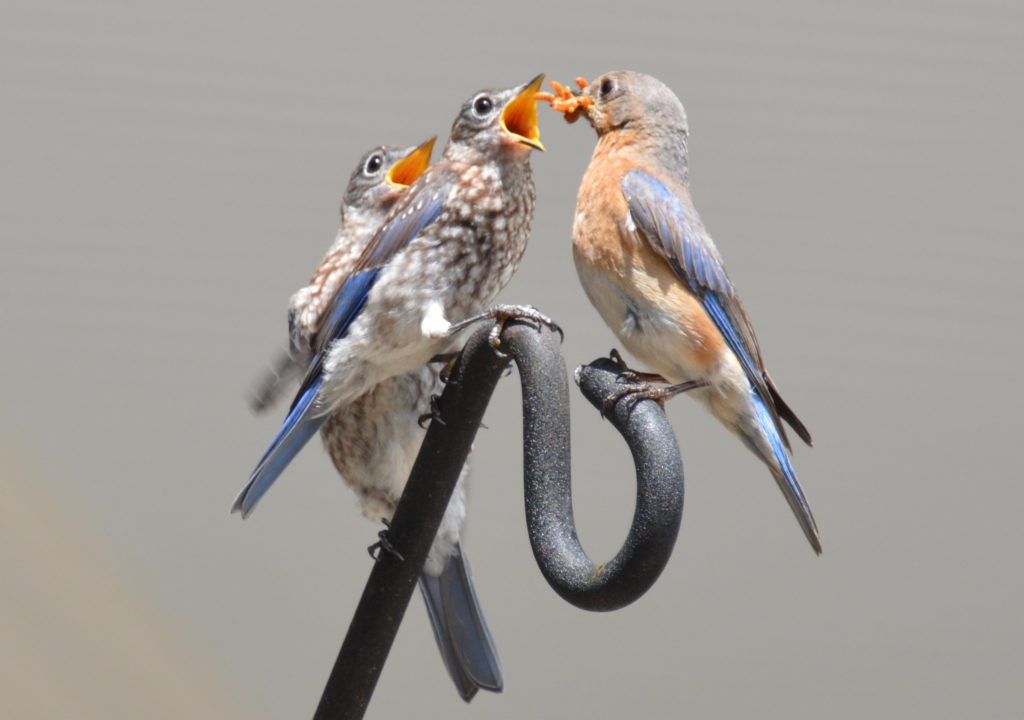The mealworm feeders are a favorite among many of the bird families on the property. The most-frequent visitors are the Eastern Bluebirds, Carolina Wrens, Carolina Chickadees, Tufted Titmice and Eastern Phoebes. It's interesting, though, how these species differ in their feeding styles.
The young Bluebirds in the picture are shown with their mouths agape; rather patiently begging for Momma Bluebird to stuff worms into their beaks. At about two weeks post-fledge (after flying skills have improved), they have just begun to follow Dad and Mom to the feeder. In no time, they'll be feeding themselves.

The Carolina Wren family will also show up, but the young will immediately find cover -- in a shrub, or under furniture. The parents will shuttle worms to the hiding place.
I almost never see the Chickadee or Titmouse families gather at the feeder. Don't know why.
The Phoebes are another story entirely. Phoebes are "fly catchers". They tend to perch on the fences around the property and, upon spotting a tasty-looking insect, dart out to capture it. They are incredible acrobats! When it comes to teaching young Phoebes to hunt, then, things like "patiently begging" and "hiding" are not virtues.
In the video you will see Dad Phoebe preparing to feed/train his 3 youngsters (Mom Phoebe is off tending to nest #3). It's quite a circus. Feeding young Phoebes is truly hazardous duty!